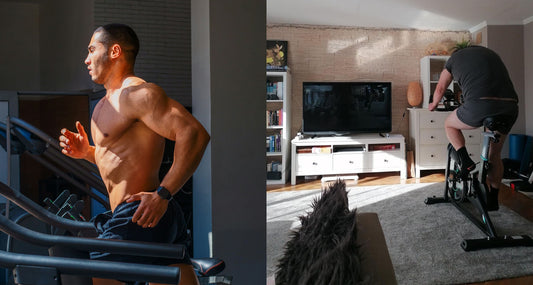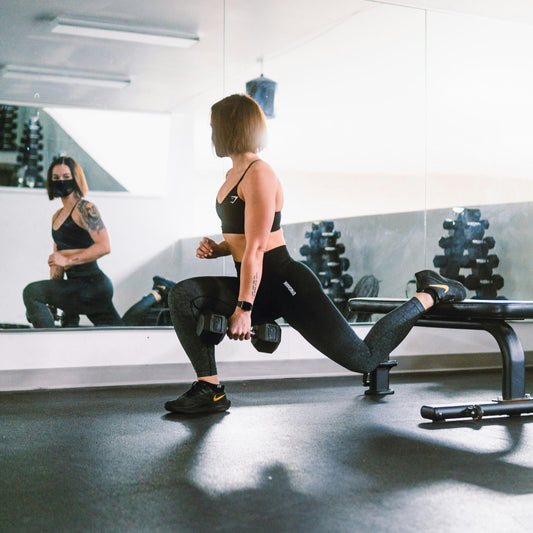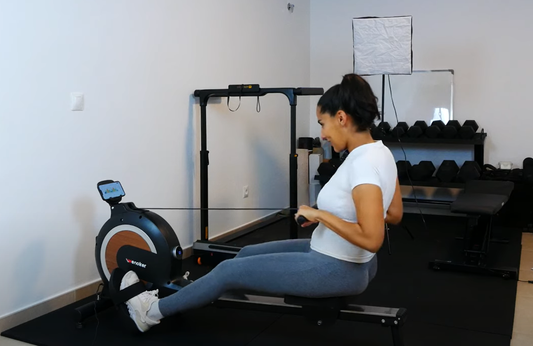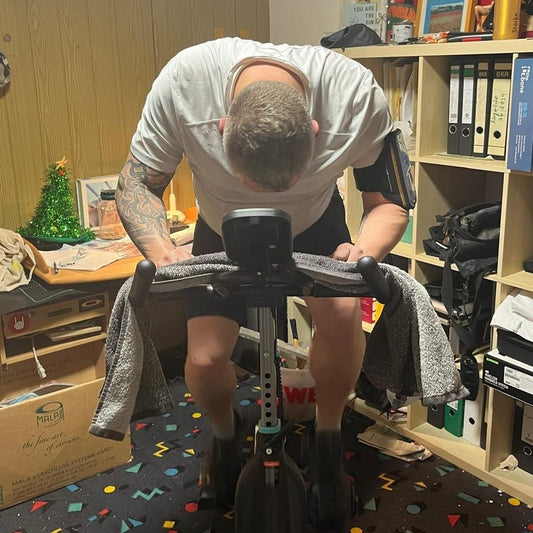by ian Winchester on September 11, 2025
Running is celebrated for its cardiovascular benefits and mental clarity, but does it truly constitute a full body workout? While running primarily engages your lower body, it also activates muscles from your core to your upper body, offering broader physiological impacts than many realize. However, experts caution that it shouldn't be your only form of exercise for balanced fitness. Let's explore what science and specialists say about running's role in a comprehensive fitness regimen.
Running: More Than Just Legs in Motion
It's true that running heavily taxes the lower body. Research examining muscle activation during running identified 76 different muscles in the lower body, torso, and arms working to various degrees. The quadriceps act as primary stabilizers upon landing, while calves and hamstrings drive propulsion. The glutes maintain hip stability, and hip flexors power knee drive with each step.
But running is more than a lower-body activity. Your upper body plays a crucial role in maintaining momentum and balance. "When we're running, we're in a controlled fall," explains Dr. Emily Reynolds, a renowned kinesiologist and author of Modern Movement Science. "Muscles in our back—including the latissimus dorsi, trapezius, and rhomboids—work hard to resist forward flexion and maintain posture." Your deltoids, biceps, and triceps also engage through arm swing, which counterbalances lower body movement.
The core muscles—particularly the transverse abdominis, erector spinae, and multifidus—create a stable connection between upper and lower body, ensuring efficient power transfer. A study published in the Journal of Strength and Conditioning Research found that six weeks of dedicated core training improved 5K times significantly, highlighting how core strength directly supports running performance.

The Extensive Benefits of Running
Beyond muscular engagement, running delivers systemic benefits. It positively influences metabolic, hormonal, skeletal, nervous, and cardiorespiratory systems. The American Heart Association notes that regular running can reduce risks of heart disease, stroke, and high blood pressure, potentially adding years to one's life.
Mental health benefits are equally compelling. Many runners experience reduced stress and improved mood, often attributed to the famed "runner's high." Dr. Reynolds adds, "Running serves as moving meditation for many. It offers mental clarity and emotional resilience that extends beyond physical health."
Why Running Alone Isn't Enough
Despite its benefits, running has limitations. It's a repetitive movement pattern that primarily loads the lower body, potentially creating muscular imbalances. "If running is your only exercise, areas like your arms and shoulders won't receive adequate stimulation, while joints in your ankles and hips may endure excessive stress," notes Dr. Mark Sissons, a sports medicine specialist and contributor to Global Fitness Review.
The U.S. Department of Health and Human Services recommends adults incorporate strength training at least twice weekly alongside cardio. Strength exercises build bone density, improve joint stability, and enhance neuromuscular coordination, all of which support running efficiency and injury prevention.
movements. "Our bodies evolutionarily expect movement through fuller ranges," explains Dr. Sissons. "Integrating exercises that involve pushing, pulling, hinging, squatting, and carrying builds functional fitness that supports daily activities."
Crafting a Balanced Fitness Plan with Running
To maximize running's benefits while ensuring overall fitness, experts recommend:
- Supplement running with strength training: Focus on compound movements like squats, deadlifts, and rows to build balanced strength.
- Prioritize mobility work: Dynamic stretching pre-run and static stretching post-run maintain joint health and flexibility.
- Embrace variety: Cross-training activities like cycling or swimming can enhance cardiovascular fitness while giving running-specific muscles a respite.
- Listen to your body: Adjust your running volume based on goals, recovery, and overall schedule.
Dr. Reynolds suggests periodizing your training: "Consider seasons of higher running volume and others where you prioritize strength work. This approach prevents overuse injuries and keeps your routine engaging."

Conclusion
Running is a phenomenal exercise that engages more muscle groups than often recognized and offers profound health benefits. However, it shouldn't stand alone in your fitness regimen. By combining running with strength training, mobility work, and varied movement patterns, you create a comprehensive routine that supports long-term health, performance, and overall well-being.
Remember, the best fitness plan is one you can sustain consistently. Whether you run five minutes or fifty, pairing it with complementary exercises ensures you're building a body capable of keeping you moving strong for years to come.









